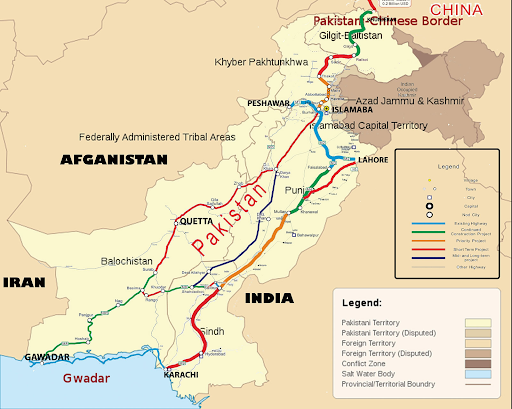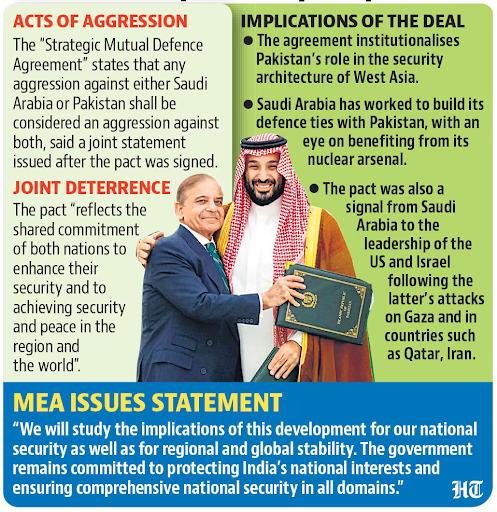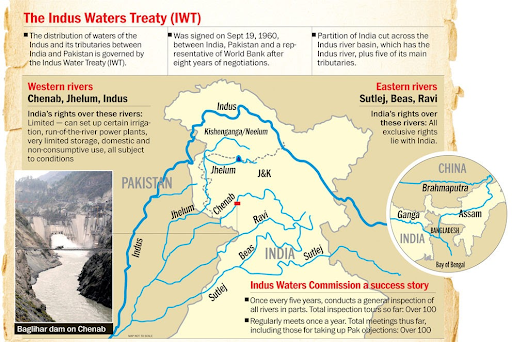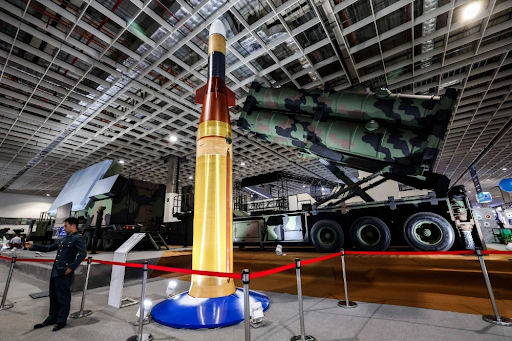



Pakistan’s revival brings both stability and strategic risk for India. A stronger Pakistan may gain global leverage and shift its military focus eastward. India must respond by boosting economic power, fortifying security, and deepening global partnerships to maintain regional dominance with cautious, forward-looking strategy.

Copyright infringement not intended
Picture Courtesy: INDIAN EXPRESS
Pakistan shows early signs of revival through international aid and diplomacy. While this could offer regional peace and trade, India must remain strategically cautious due to historical issues, rivalries, and terrorism.
|
Read all about: Pakistan Assumes UNSC Presidency l The Hazards Of Going Global On India-Pakistan Issues |
Pakistan is working towards a "revival" to overcome its long-standing economic crisis and political instability, with the goal of improving its international standing and internal stability.
Economic Revival and Foreign Investment
Projections from the Asian Development Bank (ADB) indicate a modest GDP growth recovery to 2.8% in FY 2025, driven by improved agricultural output and workers' remittances.
Pakistan received over $25 billion in foreign investment from the UAE, Saudi Arabia, and China, targeting key sectors such as energy, ports, agriculture, and minerals.
China is a crucial strategic partner for Pakistan, investing heavily in projects like the ML-1 railway and Diamer Bhasha Dam, as part of the China-Pakistan Economic Corridor (CPEC).

Renewed Diplomatic Initiatives
Pakistan is engaging actively with major global and regional powers, including China, Gulf countries, and the US, to secure economic support and enhance its international standing.
Pakistan and Saudi Arabia have recently formalized a "Strategic Mutual Defence Agreement," which states that an attack on one country will be considered an attack on both.

Military Modernization Program
Pakistan strengthened its military, adding advanced JF-17 Block III and J-10CE fighter jets from China. They also developed indigenous defense manufacturing systems.
Cross-Border Terrorism
Pakistan continues to use non-state actors such as Lashkar-e-Taiba and Jaish-e-Mohammed against India, presenting an ongoing security challenge due to the unresolved issue of state support for, or tolerance of, these terror groups.
Strategic Encirclement
CPEC, a $62-billion project of China's Belt and Road Initiative (BRI), connects China's Xinjiang region to Pakistan's Gwadar Port.
The Gwadar Port extends China's naval reach (String of Pearls strategy) in the Arabian Sea, raising India's concerns about strategic encirclement and threats to its maritime security.

Debt-Trap Diplomacy and Influence
CPEC offers Pakistan economic benefits but increasing dependency on China could lead Pakistan's foreign policy to align with Beijing's interests, opposing India in regional and international forums.
Strengthening Military and Arms Race
Pakistan's acquisition of advanced military hardware, such as J-10CE fighters, JF-17 Block III, and MIRV-capable ballistic missiles like Ababeel, alters the regional military balance.
Despite economic difficulties, Pakistan's increasing defense budget highlights a continued focus on conventional and strategic deterrence against India.
The sustained military buildup necessitates a corresponding response from India, potentially diverting resources from developmental objectives.
Water Disputes and Indus Waters Treaty (IWT)
India temporarily suspended the IWT in April 2025, following the Pahalgam terrorist attack, citing national security concerns and Pakistan's alleged support for state-sponsored terrorism.
Climate change intensifies water resource competition, which could make Pakistan more assertive about water-sharing with India.

Diplomatic Challenges
Increased diplomatic support from Gulf nations and China could empower Pakistan to counter India's efforts to isolate it on terrorism, thereby diminishing India's international influence.
India refused dialogue until terrorism ended, while Pakistan insisted on resolving the Kashmir issue first, resulting in a diplomatic deadlock and mutual accusations.
Strengthen Border Management and Counter-Terrorism
Maintain a robust security posture along the Line of Control (LoC) and international border, integrating advanced surveillance and intelligence-gathering capabilities.
India has demonstrated its capability for surgical strikes and cross-border counter-terrorism operations, as seen post-Pulwama. Sustaining this credible deterrence is crucial.
Economic Resilience and Regional Connectivity
Boost economic growth, as a strong Indian economy provides the necessary resources for defense spending, diplomatic outreach, and infrastructural development.
Accelerate projects like the International North-South Transport Corridor (INSTC) and Chabahar Port to enhance regional connectivity and economic influence.
|
Case Study: India's investment in Chabahar Port in Iran and the INSTC route aims to bypass Pakistan and provide access to Afghanistan and Central Asia. This strategic counter to CPEC enhances India's trade routes and geopolitical presence in the broader Eurasian region. |
Diplomatic Engagement and International Coalitions
Strengthening strategic partnerships with global powers (e.g., US, EU, Quad) and regional allies to counter Chinese influence and maintain pressure on Pakistan regarding terrorism.
Utilize platforms like the UN, and SCO to highlight Pakistan's continued support for terrorism and push for accountability, even as Pakistan engages in renewed diplomacy.
While maintaining the 'no talks without terror' stance, explore back-channel diplomacy for de-escalation mechanisms and confidence-building measures.
Water Diplomacy and Climate Adaptation:
India could press for renegotiation of the Indus Water treaty to address contemporary challenges like climate change, water scarcity, and infrastructure development projects in its upstream areas.
India needs a proactive strategy, combining internal security, economic strength, strategic partnerships, and firm diplomacy, to navigate Pakistan's economic stabilization and renewed international engagement, ensuring its own security and regional interests are not compromised.
Source: INDIAN EXPRESS
|
PRACTICE QUESTION Q. A diplomatically and economically revived Pakistan poses a more significant strategic challenge to India than a "failing state." Critically analyze. 250 words |
The two nations have fought four major wars: the Indo-Pakistani War of 1947, the 1965 War, the 1971 War (which led to the independence of Bangladesh), and the 1999 Kargil War.
Kashmir is a region with complex territorial claims. Both India and Pakistan administer parts of the region, separated by the Line of Control (LoC), but both claim the entirety of Kashmir.
The LoC is a heavily militarized de facto border that divides Indian-administered Kashmir from Pakistan-administered Kashmir. It was established as a ceasefire line in 1949 and formalized in the 1972 Shimla Agreement, though both sides frequently trade fire across it







© 2025 iasgyan. All right reserved